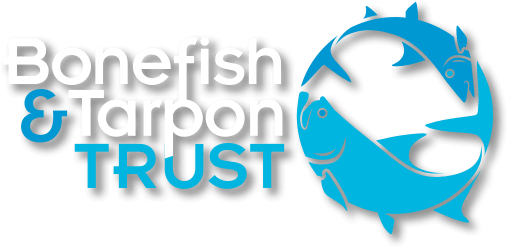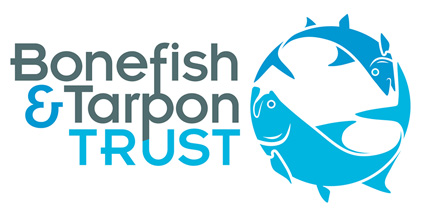The Executive Summary below outlines the progress made in the formulation of the Bahamas Bonefish Conservation Action Plan 2021, which is currently being reviewed by conservation partners. The Plan provides a summary of BTT’s collaborative work over the past decade, and maps conservation actions required to ensure a healthy bonefish fishery for the future. Given the economic and cultural importance of the fishery to Bahamians, and the threats to bonefish and their habitats, strong conservation actions are needed.
Bahamas Bonefish Conservation Action Plan 2021
January 14, 2021
Executive Summary
The Bonefish & Tarpon Trust Bahamas Initiative, active since 2008, conducts and supports scientific research to ensure the sustainability of the recreational flats fishery through habitat conservation, advocacy, and outreach & education. The scientific research provides actionable knowledge, which directly impacts bonefish and flats conservation efforts in The Bahamas. This has been achieved through collaboration with bonefish lodges, guides, anglers, Bahamas National Trust, local NGOs, teachers, researchers, and The Bahamas Government.
Background
Bonefish and the fishery: The bonefish fishery is economically and culturally important, with an annual economic impact exceeding $169 million, a significant source of revenue for Out Island communities. The economic and cultural value of the fishery provides leverage for conservation actions.
Research has shown that adult bonefish have small home ranges on the flats, and that these home ranges often encompass multiple habitats within the coastal habitat mosaic. During spawning season (October – April), bonefish migrate long distances (up to 100 miles) from their home range flats to pre-spawning aggregation (PSA) sites. PSA sites tend to be in semi-protected bays, ranging from 6-20 feet in depth, and located near the continental shelf drop-off. PSAs can consist of between 500 and 10,000 individuals. At dusk, the PSA moves offshore to deep water past the continental drop-off where they have been tracked diving to a depth of 450 feet before rapidly ascending to 230 feet where they spawn (eggs and sperm are released into the open water, where fertilization occurs). The eggs hatch in approximately 24 hours. The open ocean leptocephalus larval phase of bonefish ranges from 41 – 71 days, after which they settle in suitable juvenile habitat. Larval recruitment primarily occurs during the new moon phases, when the leptocephalus make their way inshore under the cover of darkness to minimize predation. Once the leptocephalus finds suitable juvenile habitat, which is characterized by large, open-bottom sheltered bays, the leptocephalus metamorphosizes into a juvenile bonefish. After metamorphosis is complete the juvenile bonefish mix with schools of mojarra, known locally as shad. Little is known about the life stages between early juvenile and adult, though it is suspected that sub-adult bonefish form large schools in deeper water adjacent to juvenile habitat until they grow to adult size and become sexually mature, after which they make their way onto the flats.
Conservation threats: The top threats to bonefish and the fishery they support are habitat loss and degradation, including dredging, sand mining, and large-scale developments, and to a lesser extent illegal fishing. There is currently a national park and protected area system throughout the Bahamas that protects a variety of habitats and organisms including bonefish. Efforts are ongoing to expand the protected area system, but more attention to bonefish is needed because many of the current and proposed protected areas do not encompass bonefish habitats, and there is an overall lack of enforcement and regulations. These threats are best addressed via habitat conservation, enforcement of existing laws, and education.
Science and Conservation Actions
Habitat Protection
Pre-spawning aggregation sites and offshore spawning areas: Pre-spawning aggregation (PSA) sites attract large numbers of sexually mature fish from a broad geographical area of flats to a single location. Bonefish PSA sites are currently under threat from development and fishing pressure.
To date, eight PSA sites have been identified using our established protocol on the islands of Abaco, Andros, Bimini, Eleuthera, Grand Bahama, and Long Island. Two sites on Grand Bahama and one site on Abaco were protected by new national parks in 2015. We continue to work with our collaborators to identify additional PSA sites on these and other islands, with specific focus on north Andros, Berry Islands, Long Island, Crooked Island, and Acklins because these islands host significant bonefish fisheries. Since bonefish spawning occurs offshore, research is also ongoing to identify offshore spawning areas. Once PSA sites and spawning areas are identified, it will be a top conservation priority to propose these sites for protection to prevent damage by habitat loss/degradation, and to enact regulations that eliminates fishing pressure.
Adult home ranges and spawning migration pathways: Mark-recapture and Traditional Ecological Knowledge of fishing guides is being used to delineate bonefish home ranges and spawning migration pathways, and thus prioritize areas for habitat protection. Thus far, essential bonefish habitats have been identified on Grand Bahama, Abaco, and Andros, where national parks protect substantial portions of bonefish flats habitats. Work is ongoing to identify important bonefish habitats on Long Island, Berry Islands, Acklins, and Crooked Island. Once identified, these areas will be proposed for protection.
Juvenile habitats: Although the types of habitats required by juvenile bonefish have been identified, the locations of most such habitats have not. It is generally assumed that juvenile habitats are adjacent to adult home range habitats. If so, protections of home range habitats will also protect juvenile habitats. If not, additional habitat protections will be proposed.
Restoration
Mangrove creeks: Mangrove creeks on several islands have been altered by human activity that has limited water flow and fish passage, with negative impacts on bonefish and other species. Restoring degraded creeks will increase the amount of habitat available to bonefish and other economically important species. BTT and collaborators have identified more than 14 creeks appropriate for restoration.
Hurricane Dorian: Hurricane Dorian was unprecedented in The Bahamas, and severely damaged or destroyed more than 170 km2 of mangroves on Grand Bahama an Abaco. The vast scale of destruction necessitates mangrove restoration, which is not normally required with natural occurrences like hurricanes. A broad collaboration will aim to plant 100,000 mangroves in damaged areas to boost natural recovery processes.
Education
The Flats Ecosystem Education Curriculum, created in 2017, will be introduced to private and public schools around The Bahamas. Monitoring of the use and expansion of the curriculum will quantify the number of schools, educators, and students reached. BTT will also work with collaborators, including University of The Bahamas (UB) and New College (Sarasota, FL) to develop a field course that will focus on teaching Bahamian university students about the flats and coastal ecology. Flats conservation education will continue to be included in professional workshops with collaborators. BTT will further develop the angler and guide education program to improve fish handling practices.




